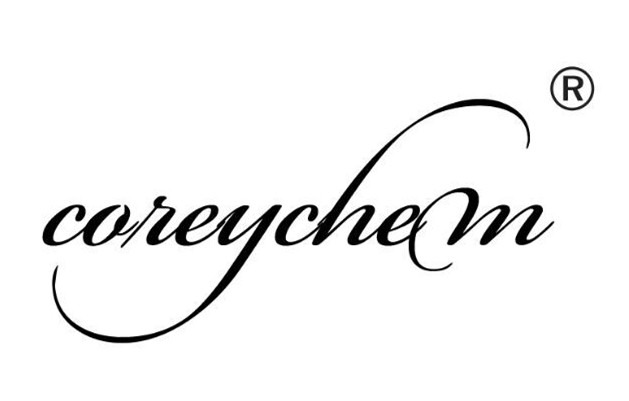1/1
Hydrochlorothiazide
$ 1.00
/1KG
- Min. Order1G
- Purity98%
- Cas No58-93-5
- Supply Ability100KG
- Update time2019-07-06

career henan chemical co
VIP8Y
 China
China
Since:2014-12-17
Address:Zhengzhou High tech Zone, Henan Province, China
Enterprise Verified
Business Bank account
Basic Contact Infomation
Business Address
Trade Company



Chemical Properties
| Product Name | Hydrochlorothiazide |
| CAS No | 58-93-5 |
| EC-No | |
| Min. Order | 1G |
| Purity | 98% |
| Supply Ability | 100KG |
| Release date | 2019/07/06 |
AD68
| Product Name: | Hydrochlorothiazide |
| Synonyms: | 2H-1,2,4-Benzothiadiazine-7-sulfonamide, 6-chloro-3,4-dihydro-, 1,1-dioxide;2h-1,2,4-benzothiadiazine-7-sulfonamide,6-chloro-3,4-dihydro-,1,1-dioxide;3,4-Dihydro-6-chloro-7-sulfamyl-1,2,4-benzothiadiazine-1,1-dioxide;6-chloro-3,4-dihydro-2h-1,2,4-benzothiadiazine-7-sulfonamide;6-Chloro-3,4-dihydro-7-sulphamoyl-1,2,4-ben-zoth-iadi-azine1,1-dioxcide;6-chloro-7-sulfamoyl-3,4-dihydro-2h-1,2,4-benzothiadiazine;6-Chloro-7-sulfamoyl-3,4-dihydro-2H-1,2,4-benzothiadiazine 1,1-dioxide;200-403-3 |
| CAS: | 58-93-5 |
| MF: | C7H8ClN3O4S2 |
| MW: | 297.74 |
| EINECS: | 200-403-3 |
| Product Categories: | Pyrimidines ,Purines;Losartan Potassium & Hydrochlorothiazide;Xanthones;Heterocyclic Compounds;Heterocycles;Inhibitors;Ion transporter and other ion channel;Intermediates & Fine Chemicals;Pharmaceuticals;Sulfur & Selenium Compounds;API;ESIDRIX;Other APIs |
| Mol File: | 58-93-5.mol |
 |
|
| Hydrochlorothiazide Chemical Properties |
| Melting point | 273 °C |
| density | 1.6761 (rough estimate) |
| refractive index | 1.6100 (estimate) |
| Fp | 9℃ |
| storage temp. | 2-8°C |
| pka | 7.9, 9.2(at 25℃) |
| λmax | 318nm(H2O)(lit.) |
| Merck | 14,4781 |
| BRN | 625101 |
| Stability: | Stable. Incompatible with strong oxidizing agents. |
| CAS DataBase Reference | 58-93-5(CAS DataBase Reference) |
| NIST Chemistry Reference | 6-Chloro-7-sulfamyl-3,4-dihydro-1,2,4-benzothiadiazine-1,1-dioxide(58-93-5) |
| EPA Substance Registry System | 2H-1,2,4-Benzothiadiazine- 7-sulfonamide, 6-chloro-3,4-dihydro-, 1,1-dioxide(58-93-5) |
| Safety Information |
| Hazard Codes | Xi,T,F,Xn |
| Risk Statements | 22-42/43-36/38-23/25-36/37/38-39/23/24/25-23/24/25-11 |
| Safety Statements | 22-24-36/37-45-33-16-7-36/37/39-27-26 |
| RIDADR | UN 1230 3/PG 2 |
| RTECS | DK9100000 |
| Hazard Note | Irritant |
| TSCA | Yes |
| Hazardous Substances Data | 58-93-5(Hazardous Substances Data) |
| Toxicity | LD50 in mice (mg/kg): 590 i.v.; >8000 orally (Piala) |
| Hydrochlorothiazide Usage And Synthesis |
| description | Hydrochlorothiazide is a kind of thiazide diuretic drugs with moderate diuretic effect. It exert is diuretic effect through acting on the medullary ascending limb cortical segment, inhibiting the active re-absorption of Cl-and passive absorption of Na+ at this site. In addition, the product also has a hypotensive effect and anti-diuretic effect. It is suitable for treating a variety of edema, particularly for cardiogenic edema. It can also be used as antihypertensive agents, for treatment light, medium hypertension. It also has certain efficacy in treating diabetes insipidus, and idiopathic hypercalciuria. Commonly used thiazide diuretics include hydrochlorothiazide, chlorthalidone, indapamide and the like. |
| Chemical Properties | It is a white crystalline powder and is odorless with slightly bitter taste. It is insoluble in chloroform and water but soluble in acetone, slightly soluble in ethanol, soluble in sodium hydroxide solution but being susceptible to hydrolysis.  Figure 1 is the structure formula of hydrochlorothiazide |
| mechanism of action | 1. Natriuretic effect: This product mainly inhibits the re-absorption of Na+, Cl-of distal tubule anterior part and proximal tubules (mild effect), and increasing urinary sodium, potassium, chlorine, phosphorus and magnesium ion excretion, and reducing urinary calcium excretion. 2. Antihypertensive effect: it has a moderate and precise antihypertensive effect and can reduce both the orthostatic, supine systolic and diastolic pressure and also enhance the hypotensive effect of other antihypertensive drugs. 3. Anti-diuretic effect: This product can reduce the amount of urine in nephrogenic diabetes insipidus, sometimes by 50% with the specific mechanism of action remaining unknown. |
| Pharmacokinetics | It has rapid but incomplete oral absorption with heaving meal being able to increase the absorbed amount, which may be related with the prolonged residence time of drug in the small intestine. This product can partially bind to the plasma protein with the other part getting into the red blood cells. It takes effect at 2h after oral administration with the peak reaching in 4h. It duration time is 6~12h. It is mainly secreted in the prototype through the urinary excretion with the half-life (t1/2) being 15h and the t1/2 being extended in renal dysfunction. The above information is edited by the chemicalbook of Dai Xiongfeng. |
| Indications | 1. Edema disease: including congestive heart failure, cirrhosis, nephrotic syndrome, acute and chronic nephritis edema, chronic renal failure early, adrenocorticotropic hormone and estrogen therapy caused retention of sodium and water. 2. High blood pressure: it can be used alone or in combination with other antihypertensive drugs. It is mainly used for the treatment of essential hypertension. 3. Central or nephrogenic diabetes insipidus. 4. Kidney stone disease: it is mainly used for the prevention of calcium stone formation. |
| Dosage | Oral ordinary tablet: the efficacy onset of oral administration is in 2h with plasma concentration reaching peak at 4 hour and the effect lasting for 6~12h. Adults: (1) for the treatment of edema disease, a 25~50mg, qd or bid, or qod; or take drug 3~5d weekly with a interval of 3~4d. (2) For the treatment of hypertension with the dose of 25 to 100 mg per day and divided into 1-2 times for administration. It needs to be used in combination with other antihypertensive drugs and should be subject to dose adjustment according to the actual antihypertensive effect. The dose is usually reduced to 25 to 50 mg per day within one week. (3) for the treatment of diabetes insipidus, take 25mg once tid, or 50 mg once, qd. Children: treatment of edema disease, take 1~2mg/kg per day and divided 1-2 times for administration. Adjust the dose according to the actual efficacy. |
| Side effects | Most adverse events are related to the dose and duration. 1. Water, electrolyte imbalance caused adverse reactions are the more common: hypokalemia is prone to occur and is related to the potassium excretion effect of thiazide diuretics. Long-term potassium deficiency can damage tubular with serious loss of potassium being able to cause vacuolar changes in the renal tubular epithelial and severe tachyarrhythmias and other ectopic rhythm. Thiazide class, especially hydrochlorothiazide can often significantly increases the excretion of chloride, causing low chlorine alkalosis or low chlorine, potassium alkalosis. In addition, hyponatremia is also not rare, causing central nervous system symptoms and aggravate kidney damage. Dehydration causes blood volume and renal blood flow reduction and can also cause reduced glomerular filtration rate. The common clinical manifestations of water, electrolyte imbalance include dry mouth, thirst, muscle cramps, nausea, vomiting and extreme fatigue, weakness and so on. 2. Hyperglycemia: It can make impaired glucose tolerance, elevated blood sugar, may be associated with inhibition of insulin release. 3. Hyperuricemia: it can interfere with renal tubular excretion of uric acid with a few being able to cause gout attacks. Usually it doesn’t cause joint pain, so hyperuricemia is easily overlooked. 4. Allergy: such as rash, urticaria; relatively rare. 5. Leukopenia or deficiency, and thrombocytopenic purpura, also rare. 6. Rare cholecystitis, pancreatitis, sexual dysfunction, light sensitivity, and color vision disorders. |
| Drug Interaction | 1. Adrenocorticotropic hormone, corticotropin, estrogens, amphotericin B (intravenous administration), can reduce the diuretic effect of this product and increase the chance of electrolyte imbalance, particularly hypokalemia. 2. Non-steroidal anti-inflammatory analgesic drugs, especially indomethacin, can reduce the diuretic effect of this product which is related with the former’s inhibition of prostaglandin synthesis. 3. Upon combination with the sympathomimetic amine drugs, its diuretic effect weakened. 4. Cholestyramine (cholestyramine) can reduce the gastrointestinal absorption of this product. Therefore, it should be taken orally at 1 h before or 4 h after taking the former drug. 5. In combination with dopamine, the diuretic effect strengthened. 6. In combination with antihypertensive drugs, both diuretic and antihypertensive effect were enhanced. 7. In combination with anti-gout drug, the dosage of the later one should be adjusted. 8. It can weaken the anticoagulant, mainly due to the decreased elevated levels of blood plasma volume after diuretic, elevated levels of blood clotting factors, together with the diuretic effect improving blood supplement in the liver, and increased synthesis of clotting factors. 9. It can reduce the role of hypoglycemic agents. 10. Upon being used combination with digitalis drugs or amiodarone, you should beware of adverse reactions caused by hypokalemia. 11. Upon being combination with lithium preparations, the product can reduce the renal clearance of lithium and increase renal toxicity of lithium. 12. The effect of methenamine is affected by this product with its conversion to formaldehyde being inhibited, decreasing the efficacy. 13. Enhance the non-depolarizing muscle relaxant effect which is related to a decline in serum potassium. 14. Upon being used in combination with sodium bicarbonate, the chances of low chlorine alkalosis increases. |
| Uses | The product is a typical representative in the thiazide diuretic drug with its pharmaceutical sales in United States ranking first in 1985. Owing to its easy administration, moderate action as well as being suitable for all kinds of edema, it is most often clinically applied. Owing to adverse reactions like potassium secretion, we should pay attention to supplement potassium salt during the application. Intravenous injection-mice-LD50: 590mg/kg, oral LD50: greater than 8000mg/kg. Diuretics It mainly inhibits the re-absorption on Na+ and Cl-by the proximal end of the distal convoluted tubule so that renal excretion of sodium chloride is increased to produce a diuretic effect. It is a kind of diuretic drugs of moderate effect. This product has antihypertensive effect with the effect being enhanced when being use in combination with Lee medicine paste, antihypertensive shen paste or apocynum venetum and other traditional Chinese medicine. This product also has anti-diuretic effect and can be used for the treatment of diabetes insipidus |
| Production method | It is produced by: m-Chlorosulfonated goes through chlorosulfonation to give 5-chloro-2,4-chloro-anilide, and further reacted with ammonia to form 5-chloro-2,4-sulfamoyl aniline which finally reacts with formaldehyde to obtain the final product. |
| Chemical Properties | White Solid |
| Uses | A carbonic anhydrase inhibitor. Diuretic. |
| Uses | Labelled Hydrochlorothiazide (H714560). Hydrochlorothiazide is a carbonic anhydrase inhibitor as a diuretic. |
| Definition | ChEBI: A benzothiadiazine that is 3,4-dihydro-2H-1,2,4-benzothiadiazine 1,1-dioxide substituted by a chloro group at position 6 and a sulfonamide at 7. It is diuretic used for the treatment of hypertension and congestive heart failure. |
| General Description | Crystals or white powder. |
| Air & Water Reactions | Insoluble in water. |
| Reactivity Profile | Strong reducing agents will produce toxic gases ammonia and hydrogen sulfide. |
| Fire Hazard | Flash point data for Hydrochlorothiazide are not available but Hydrochlorothiazide is probably combustible. |
Company Profile Introduction
Established in 2014,Career Henan Chemical Co. is a manufacturerspecializing in the sale of fine chemicals. Mainly deals in the sales of: Pharmaceutical intermediates OLED intermediates: Pharmaceutical intermediates; OLED intermediates;



